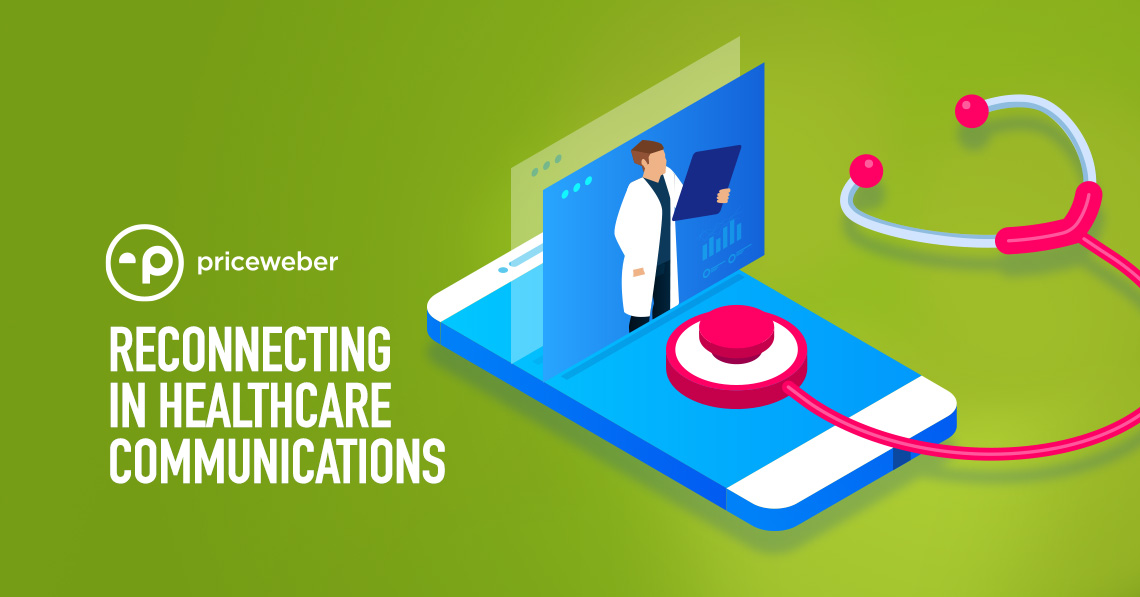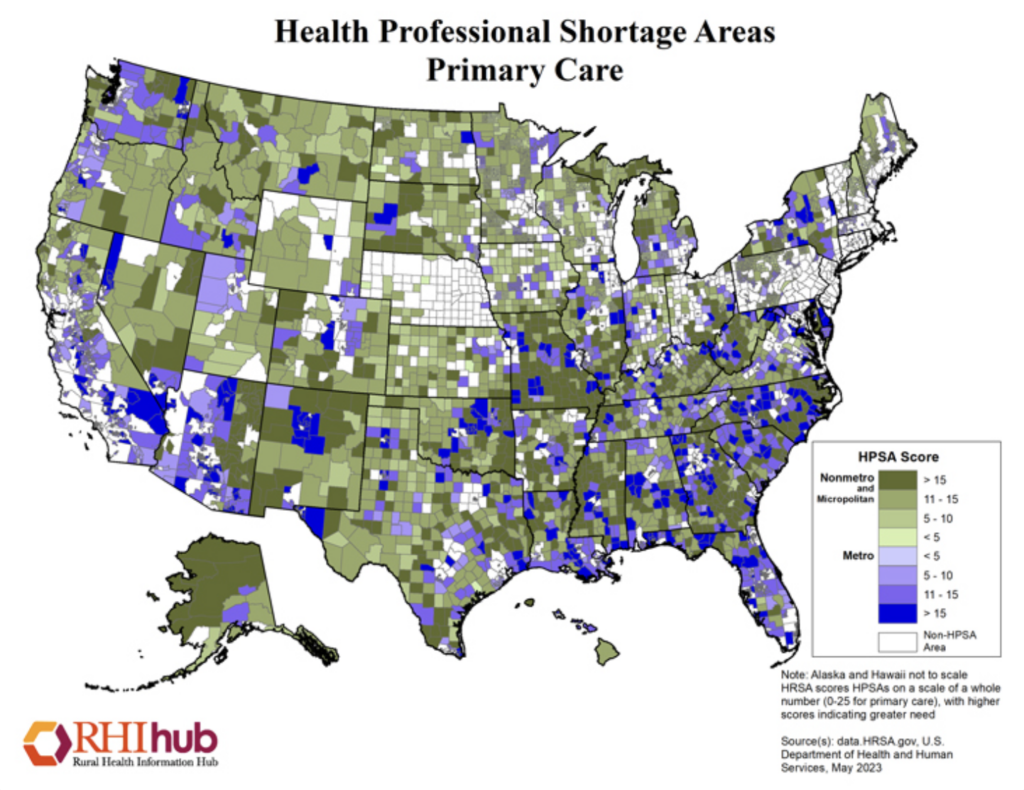It’s a big challenge for many workplaces—how to effectively engage and connect with your employees through internal communications. During the pandemic, employees in countless professions leaned on internal communications to find out what was happening at the office when they were away. People came and went. Staffers heard through the grapevine about a new employee hired at the height of COVID-19, and by the time they returned to the office, that person was already gone. Some company leaders were so busy trying to figure out how to regroup from sudden changes in their business plans during the Great Resignation that little time was spent on internal communications, and an overall disconnect set in.
In healthcare, doctors, nurses, and other medical staff had no choice but to be present on the frontlines 24/7, leaving them exhausted, in a state of burnout, and feeling under-appreciated.
Healthcare workers left in droves, only worsening existing staffing issues caused by an aging patient population and healthcare retirements. In the healthcare industry, it is more important than ever before to retain these medical professionals, which is where internal marketing can be crucial.
In this edition of Plain Talk, we’ll explain how a plan for better employee engagement in healthcare could lead to a happier workforce and possibly greater retention.
- Healthcare Workforce Shortage
- Communication Changes
- 4 Ways to Increase Employee Engagement in Healthcare
- Ready to Reconnect?
Healthcare Workforce Shortage
According to the American Hospital Association, the healthcare industry will face a shortage of up to 124,000 physicians by 2033 and will need to hire approximately 200,000 nurses per year to meet increased demand and replace retiring nurses. Another study by management consulting firm Mercer also found the healthcare workforce needs to increase dramatically in the next decade to meet demand and avoid a shortage of more than 400,000 home health aides and 29,000 nurse practitioners. Current shortages already have healthcare professionals with more work to shoulder.
Communication Changes
Communication continues to improve for patients, from telehealth offerings to the virtual wait times now posted at many urgent care centers or large organizations’ emergency rooms. However, it’s just as important that communication continues to evolve for the better for an overworked healthcare workforce. Shifts at medical centers are tough and tiring; there’s not a lot of time to get to know one another other than those in the office or unit you usually work in. It’s also vital that health professionals get all the information they need promptly so patients have it too, which can be lifesaving—another reason why internal communications can be crucial.
4 Ways to Increase Employee Engagement in Healthcare
Increasing employee engagement in healthcare is important for fostering a positive work environment and, consequently, improving patient care. Here are four ways to improve communication with your team.
1. Create Better Methods of Communication
Healthcare companies and organizations are trying to help lessen information overload with easier ways to get it. A simple use intranet site or internal website for employees is one way, incorporating small articles and links to HR, providers’ schedules, or Family and Medical Leave Act (FMLA) information. Many healthcare systems have had intranet pages for years, while others have recently come on board with the trend and popularity of the direct-to-consumer marketing of telehealth. It’s similar to connections made in a patient portal where in one place, patients can check in for appointments, request prescription drug refills, and send messages to doctors such as, “My medication isn’t working completely; can I get something else?” It cuts out the middleman and offers more of a direct connection to medical staff or access to labs and reports.
A central space to engage
In the same way, an intranet site for a healthcare group not only has internal business links but also acts as a central space to engage. Now more than ever, it’s important to keep internal sites or portals modern and appealing. What’s on it? You might see a message of the day, “Let’s make it a great Monday, everyone!” And why not? It’s a positive start, right? Maybe it’s a reminder in a bold banner about National Nurses Week or Asthma and Allergy Awareness Month. There may be a systemwide introduction for a new provider that just joined the healthcare system or timely healthcare information that would benefit all colleagues to know about. The opportunities are endless.
Another advantage to the intranet? It’s always there and available. The disadvantage? A team member usually needs to be logged onto a computer, as it can be more challenging to use on mobile devices. When it comes to new health apps, some are highly sophisticated, using artificial intelligence designed so medical professionals can get support from learning tools to help them better understand patients and assist in their treatment. Others help better deliver patient information among medical team members. While some doctors still use the old one-way communication pager system to be notified, even modest apps can relay more information like a patient name, DOB, phone number, and ailment. In turn, the response to the patient is faster than in the past.
2. Make it Simple and Significant
Simplifying the process and not overloading internal communications can help. By noon on any given weekday, a physician may get 100 new emails. Email, while easily accessible by your phone, is considered an outdated annoyance by some and overwhelming to others. Healthcare companies and organizations are trying to help lessen information overload with more accessible ways to get it. Instead of email, perhaps upcoming events, health trends, or news press releases about the company would be better served to employees in a newsletter. Clear and concise newsletters also help medical centers get out information about things like patient portal changes or new operating hours.
Recent hires also deserve an introduction that’s more prominent than an email. That’s where a colleague spotlight comes in. Profiles on doctors, nurses, and healthcare workers are a great and meaningful way to make those introductions, especially in large organizations. The content should have a fresh take even if the health professional has been employed there for three decades. Everyone has a unique story to tell. There should also be a good balance regarding who’s spotlighted. Without this type of communication, how else would we know that Nurse Practitioner Smith has a background in teaching, went to a rival university, has two kids and a golden retriever, and likes to skydive on the weekend?
3. Watch Frequency
The inbox is full, remember? If you want employees to read that healthcare newsletter, it may be time to pull back on how many days it goes out. There’s a better chance of making an impact when it’s less frequent. Instead of weekly, maybe it’s monthly or bi-monthly. When the content continues to be engaging and important, staffers will know it’s something not to be missed. The same is true with a colleague spotlight. Once a week, it’s more likely to be read than new spotlights published three times a week.
4. Increase Engagement and Recognition
With any job, employees want to feel appreciated, and that’s exactly why successes should be celebrated. In healthcare, medical professionals already deal with patients who are not feeling well. When employees go above and beyond, they should be recognized. Maybe a bad review came into an office in the past when a call center employee was rude. It certainly makes for a good day and a great turnaround when a doctor or medical team gets a great review that’s posted online. Everybody didn’t see it, but they will if it’s front and center on the company’s intranet site or newsletter. Knowing that a patient had a great experience with a helpful nurse or learning from a grateful family that their loved one received medication that helped them feel much better is a reminder of why all the long hours pay off.
Ready to Reconnect?
If you are ready to take the next step with improving internal communications for your team, we’re ready to assist! With the right strategy, you can grow employee engagement in healthcare while also retaining your team. If you’re ready to talk, drop us a note or call us at 502-499-4209.
Connie Leonard is a Public Relations Manager at PriceWeber. The former Louisville Television Anchor is a 12-time Emmy award-winning reporter in News and Sports and an Edward R. Murrow Award recipient. She can be seen on true crime documentaries on Netflix, Discovery ID, and Oxygen.
Like what you read today? If you’re not already a subscriber to our Plain Talk newsletter, you can subscribe below.


